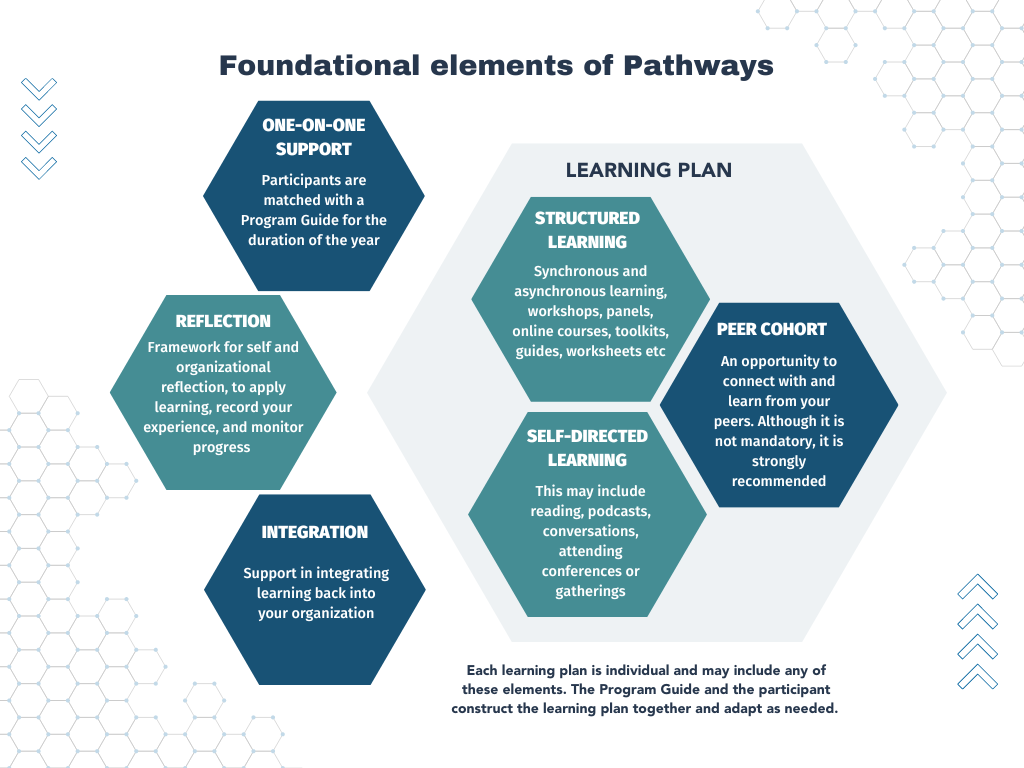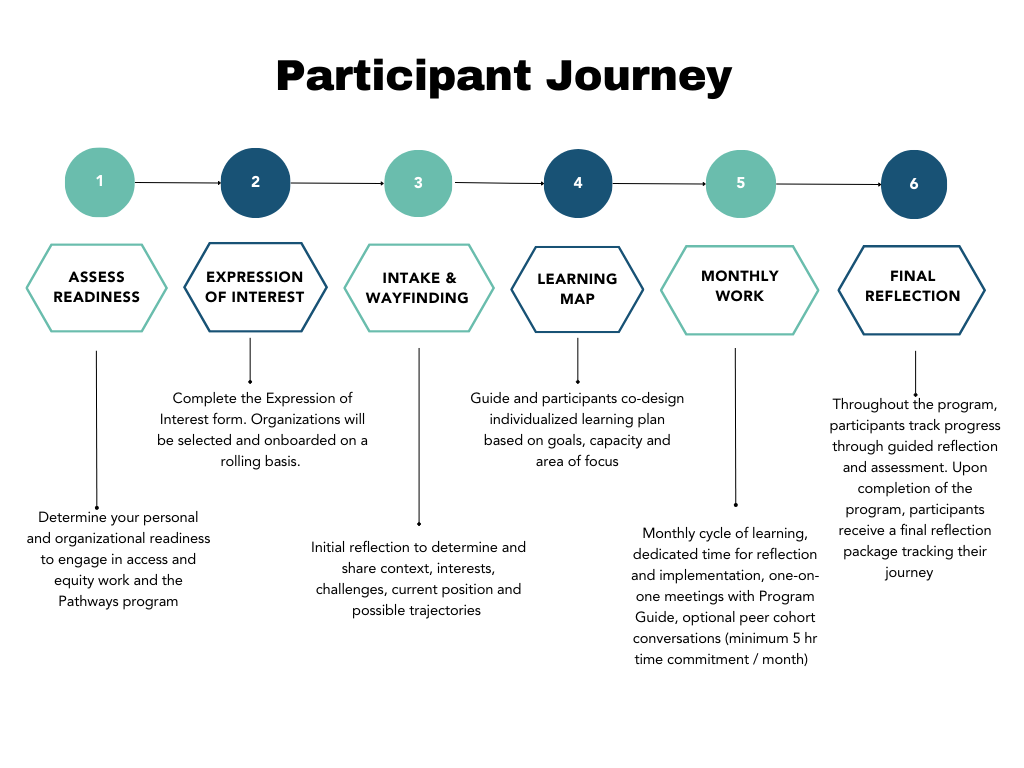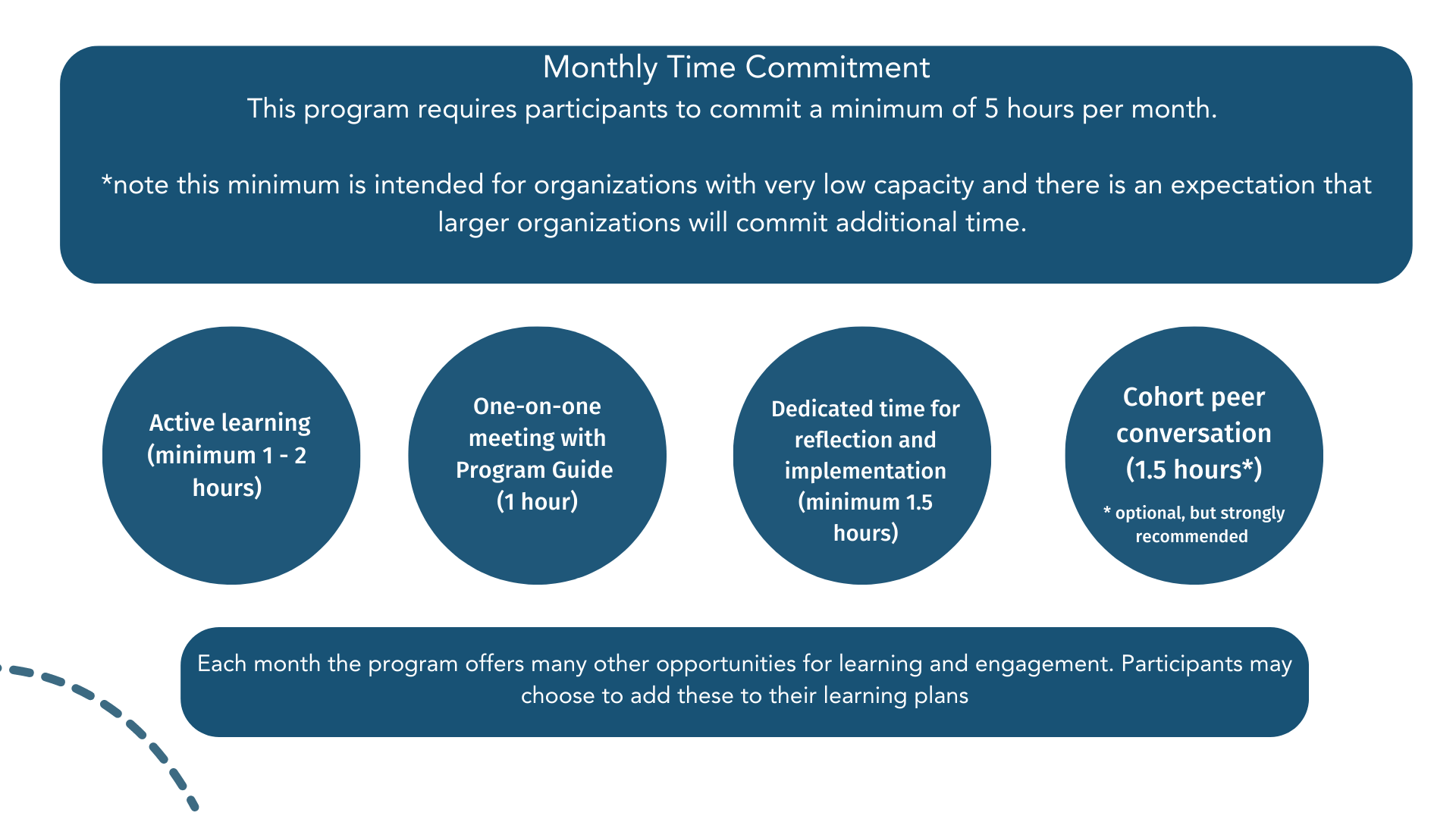Program Details
What is Pathways?
The Pathways program is centred on one-on-one support, access to diverse existing and emergent learning opportunities, and a community of peer learners.

Is this program for me?
The Pathways program is open to arts, culture, and heritage non-profit organizations and collectives operating in the lands colonially known as British Columbia. It is intended for professionals/volunteers who are committed to reflecting, learning, and integrating more equitable practices into their organizations and work.
Pathways is designed to be impactful for organizations and individuals working in different contexts, with different interests, and at different points in their work towards equity. Whether you are strongly invested in equity and would like access to more costly advanced learning opportunities, or are just beginning and would value one-on-one guidance as you get started; this program may be a good fit for you and your organization.
Download examples of Case Studies: WORD or PDF
Organizational Criteria
- Be a BC-based arts, culture, or heritage non-profit organization or collective
- Have two people from the organization commit to working together in the program for one year
- Commit to supporting participants in implementing more equitable practices into the organization
Participant Criteria
- Be interested and invested in ongoing learning about access and equity
- Be in a position to influence change within their organization
- Be willing to provide feedback and contribute to the shaping of this program
- Agree to the program code of conduct
What to expect?

Time Commitment
In order to make meaningful change, a significant commitment over time is required. Taking one course or workshop will not have the same effect as sustained commitment to ongoing learning and change. This program requires participants to commit a minimum of 5 hours per month. There is flexibility, but we believe 5 hours per month is the minimum commitment for the program to positively impact participants and their organizations.
*note this minimum is intended for organizations with very low capacity and there is an expectation that larger organizations will commit additional time.

Why would you do this?
Our goal is to support you as you implement tangible changes into your organization that will have lasting impact.
Gain access to learning opportunities that may not be within your budget
- Pathways includes the cost of some learning opportunities (your individual learning plan will include activities that are paid for by the program, and may include additional activities that you choose to invest in that are beyond the scope of the program budget).
Gain one-on-one support
- An integral component of Pathways is the individual support provided by a program Guide. This Guide assists you in identifying focus areas, setting goals, and creating a customized learning plan. Throughout the year, you’ll have monthly one-on-one check-ins with your Guide to discuss your work, receive guidance, track progress, and address challenges.
Join a community of learners
- This work can be challenging to undertake alone. In addition to being supported for a year in your personal and organizational work, you will have the opportunity to make connections in the wider sector, engage in peer learning, and gain insights from others’ journeys.
Reflection
- Pathways focuses on learning-to-action. Throughout the program, you will work with your Guide to reflect on what you have learned, relate it directly to your work, and determine how to implement the learning into your organization. At the end of the year, you will have a record and documentation to reflect your progress and the changes within your organization. This document may help you to articulate your experience, challenges, and progress to board members, funders, and your community.

